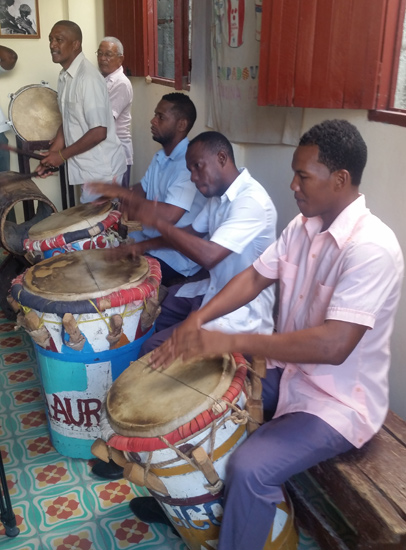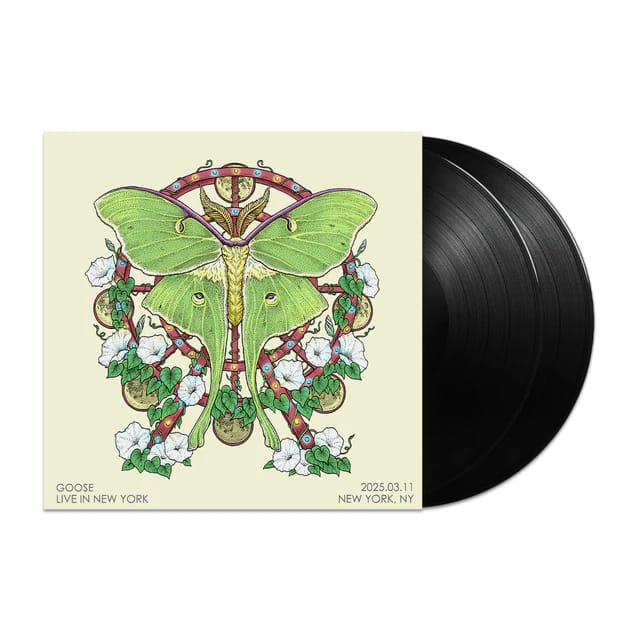Cuba: Seeing the Sounds of the Island

Tumba francesa drummers in Santiago de Cuba
When I mentioned to people that I was headed to Cuba either their eyes lit up with an envious smile or a knowing nod and a fondly recounted memory as they had traveled there before. The allure of Cuba varies – iconic cigars, classic rum, colorful architecture, a vibrant arts scene, Caribbean beaches and as well as the verdant center. The music, which lies deep in the culture and history of Cuba, enticed me. Unbeknownst to many, Cuban music has influenced so many current genres outside Cuba including salsa, jazz, rumba and even early rock ‘n’ roll. So I set off to get a taste of the musical roots of Cuba.
First stop – Havana, a contradiction of old and new. Of disrepair and growth. For many years, I viewed magazine photos of the classic Chevys, brightly painted doorways and horse drawn carriages which still sets the flavor for Old Havana. Walking through Old Havana I found it to be impossible not to hear music ranging from a Michael Jackson impersonator to a pair of locals beating their tumbadoras (conga drums) in one of the three main plazas. The only other city where I heard music from early morning until the wee hours was Nashville. I walked several miles through the Old Havana popping my head in cafés, plazas, alleyways, bars and hotels to absorb the sounds.
The popular pedestrian only Obispo Street represents home for a myriad of musical venues. A local recommended bar/café Bosque Bologna so I popped in ordered a mojito and kicked back to listen to what the band described as musica tradicional (traditional Cuban music). Just a few minutes into their first tune, I found myself toe tapping to their rhythmic tunes. This group played not only traditional instruments guiro (like a gourd) and the congas but included a guitarist, bassist and a trumpet player. Just up the road, I reluctantly entered the cliché tourist bar El Floridita but got a pleasant surprise from the quartet playing their own Cuban standards mixed in with some modern tunes.
I let the melodies carry me from Old Havana to the less scenic Central Havana to catch some rumba at Callejon de Hamel. The colorfully painted, pedestrian only alley immediately caught my eyes with vibrant art on the walls, half cut bathtubs that doubled as seats and pieces of old musical instruments creating the found art that adorned the space. The energy rivaled Sunday morning gospel. Nothing fancy here. I just soaked in the raw energy from the bands on this small street. It gave me a chance to feel the artistic and community based vibe while listening to the Afro-Cuban influenced rumba.
Rumba dates back to the late 19th century, where the influence came heavily from traditional African music and dance. Every Sunday from 12 noon until about 3 pm various rumba bands generate this soul thumping music. Even though I arrived early, I had to squeeze in with the energetic crowd of locals and visitors. I stood on the far side watching the polyrhythmic drumming of several well toned players bang away on their colorfully painted tumbadoras (conga drums). Another player whacked his claves, two sticks that he struck against each other, while another rubbed his palitos (stick) to the catá or guagua, a wooden cylinder. The other members alternated with vocal improvisations and sometimes energetic dancing. I stood just a few feet behind the drummers and could feel not only the beat but the rhythm.
After playing for almost an hour the bands switched and I watched a female ensemble pop on stage. My ears loved their varying vocals and smooth beats. I could have easily spent more time here but the other end of Cuba beckoned.
I switched sides – to the east edge of the island – because the music on eastern side offers its own distinct flavors. I landed in Santiago de Cuba and my feet immediately realized that the second largest city would be much more manageable to scurry around. The (much smaller) Santiago represents the epicenter of son which came about in the 1930s combining traditional Cuban elements with Afro-Cuban song and percussion instrument elements. Notable musicologists have said that that son is to Cuba what the tango is to Argentina, or the samba to Brazil. Instead of wandering the streets of Havana, I ambled from room to room at the Casa de la Trova which contains three separate venues for son.
I grabbed a seat in the middle of a well attended venue (considering it was Monday afternoon) because the seven member son band rocked. They mixed tempos. They played a few upbeat tunes where several couples got up to dance but I kept myself planted to fully enjoy the music. Then they slowed the pace and made it more romántico. I fixated on the fingers of the musician playing the tres (Spanish for three) a guitar-like three-course chordophone of Cuban origin. The sextet offered up energetic precision that sounded like a combination of European and Afro-Cuban beats.
A trio son group started up in the even smaller stage next door. Two older women alternated playing claves and singing vocals, while a guitarist strummed his chords. While not as wildly energetic as the other group the band mesmerized me with their fluid rhythm.
My melodious Santiago stay concluded with a late night visit to the Iris Jazz Club to catch a talented Afro-Cuban jazz band. The seven piece band not only looked diverse with a mix of older and younger members but they played a wild mixture of harmonies and improvisation. I particularly enjoyed their souped-up version of “Bésame Mucho”. I’ve heard many straight ahead jazz bands but this group combined so many tempos and varied drum and beat elements that it gave me a deeper appreciation of their jazz talent.
Moving toward even more regional tunes, I drove to Guantánamo. If Santiago claims son, then changüí grew from Guantánamo. I journeyed through the verdant, low lying hills then entered the Casa de Changüí. I toe tapped while five uniformly attired ensemble played a set of the fast moving rhythms. Changüí remains all about the rhythm while son does not. Unlike other music styles, changüí instruments remain unchanged – marímbula, bongo, tres, güiro (or guayo) and a singer.
Post changüí, I literally walked across the street to hear some tumba francesa which represents a purely African style drumming brought to Cuba by Franco-Haitian slaves. I read that only three places continue to play this music. Sitting in front in the tight space, I not only heard the drummers but felt them as well. The free flowing dancers who mimic the “contredanse” of their former white masters only added to my enjoyment.
Not missing a beat, I scooted to the local Casa de la Trova in the city center. I arrived in time to catch more changüí. Same five instruments, same fast rhythm but these guys had some colorfully costumed dancers fronting them. One kindly dancer coaxed me to dance the simple changüí dance steps with her. John Travolta has nothing to worry about.
After spending much time listening to such varied music and eating so many wonderful meals (that’s another story) I began to digest the relationships and influences that these Cuban styles have impacted. Even when I returned home, I appreciated the Cuban music roots for the contemporary influences. Now when I talk with people about Cuba and its music my eyes will light up and a big smile will adorn my face.

At this point Internet service remains extremely limited in Cuba so it is good to do a little homework before you get there.
Music venues
Check out the EGRAM website (Enterprise of Recordings and Musical Editions) – the national record label of Cuba for updated schedules and venues.
http://promociones.egrem.co.cu/
Casa de la Trova exists in most of the major cities. It offers an easy venue to experience first rate local music.
La Habana offers an English version digital magazine that offers music insights and schedules
Music museums
Most of the major cities have local music museums which display old photos, instruments and local music history and often offer live performances.
http://www.museomusica.cult.cu/
http://www.radiohc.cu/especiales/exclusivas/63343-un-museo-de-la-musica-para-santiago-de-cuba
Music festivals
Several key music festivals exist which offers a great opportunity to view many bands during a short stay.
Havana International Jazz Festival
From 12/11/2016 to 12/19/2016 at multiple venues
MANANA 2016
May 4-6, 2016 Santiago de Cuba
http://www.mananacuba.com/
History of Cuban music
If you want to dig deeper, Cuba and Its Music: From the First Drums to the Mambo by Nick Sublette offers a comprehensive history of Cuba and its music
Music guides and tours
Cuban Adventures: To create a Cuban music adventure of your own, visit www.cubagrouptour.com.




















